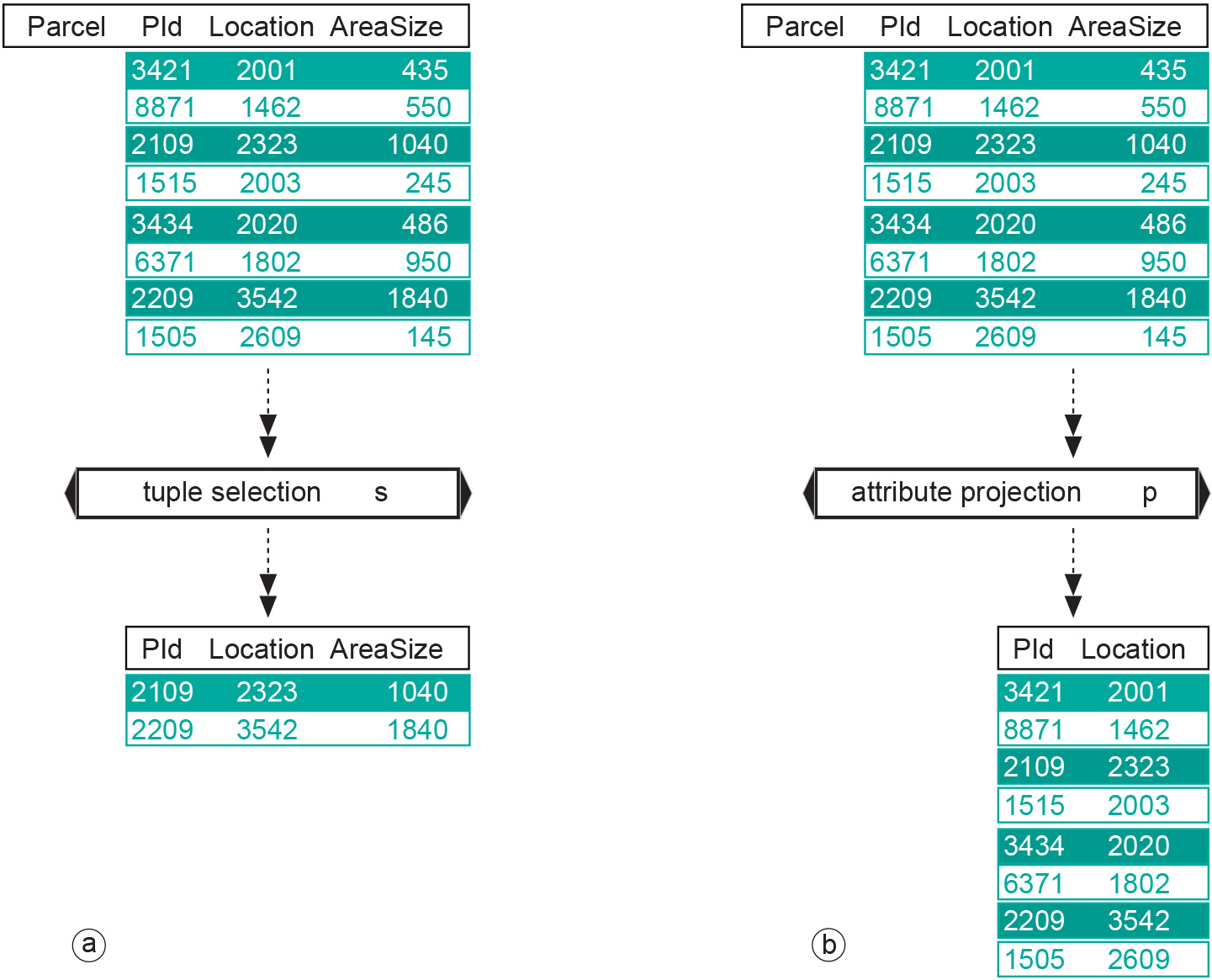Selection of records
Introduction
Tuple selection works like a filter: it allows tuples that meet the selection condition to pass and disallows tuples that do not meet the condition. The operator is given some input relation, as well as a selection condition about tuples in the input relation. A selection condition is a truth statement about a tuple’s attribute values, such as AreaSize > 1000. For some tuples in Parcel, this statement will be true and for others it will be false. Tuple selection on the Parcel relation with this condition will result in a set of Parcel tuples for which the condition is true.
Queries like the tuple selection and attribute projection do not create stored tables in the database. This is why the result tables have no name: they are virtual tables. The result of a query is a table that is shown to the user who executed the query. Whenever the user closes her/his view on the query result, that result is lost. The SQL code for the query is, however, stored for future use. The user can re-execute the query again to obtain a view on the result once more.

Learning outcomes
-
5 - Data management: relational database and DBMS
Describe and explain the structure and components of a relational data model and a relational database (level 1 and 2). Describe and explain what a Database Management System (DBMS) is and how it links to a GIS.
-
6 - Data retrieval and queries
Explain the basic concepts of data retrieval (attribute and spatial queries) and formulate queries to make a selection on attributes and geospatial data from a spatial database.
Prior knowledge
Outgoing relations
- Selection of records is a kind of Query
- Selection of records is based on Data attribute
- Selection of records is based on Tuple
- Selection of records is same as Tuple selection